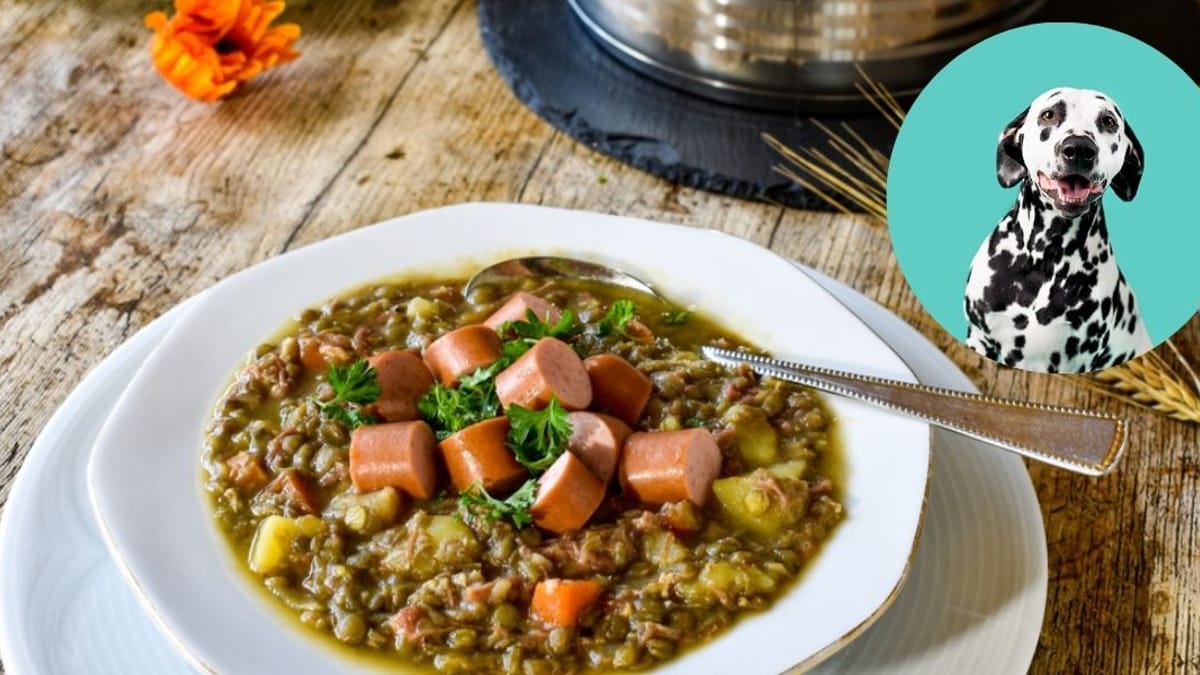Dogs can eat lentils? This is the dilemma of those who would like to know whether to give the dog the opportunity to exploit the benefits of legumes and in particular of this specifically. The point is that being a food particularly rich in fiberthe concern is that it could cause discomfort to the animal.
The discussion is broad and in principle it can be said that dogs can eat lentils, provided that they are given due attention and certain precautions are maintained. In this way eating lentils will only be good for our 4-legged friend, especially if the opinion of the veterinarian is consulted before integrating them into his diet.
Can you give lentils to dogs?
Dogs can eat lentils because these, like any legume, can be an excellent food to give to our four-legged friend, because rich in protein and fiberfundamental elements for a healthy and balanced diet.
Especially in some specific cases, lentils are very useful for avoid obesity, because they are low in sugars despite being very nutritious, and to control diabetes. Furthermore, almost all dogs love this legume, for its strong flavor especially if cooked without seasoning.
Added to your furry friend’s daily diet, they will give the right amount of energy and will be perfect for those dogs which, due to gastritis and intolerances, must avoid animal proteins which often cause diarrhea and vomiting to the more delicate intestines. Also ideal for older animals.
Dogs can eat lentils for these reasons
Dogs can eat lentils, which have their benefits. Being rich in protein and fiber they are good for the dog, which will gain in health. This legume is also a source of:
- vitamine B;
- magnesium;
- phosphorus;
- potassium;
- copper;
- zinc;
- ferro;
- folic acid.
They also act on the body reducing the level of cholesterol and the risk of heart disease, fight high blood pressure and help with weight loss.
Lentils are bad for dogs in these cases
On the other hand, however, being full of fibers, they can result poorly digestibleIndeed, among the legumes they are the ones that are most difficult to digest, especially if the dog already has problems related to the gastrointestinal system.
Furthermore, like all legumes, can cause aerophagia, resulting in pain in the abdominal area. The problems that arise with lentils, especially if raw, don’t end there.
This food contains LECITHIN, which is a glycoprotein, often causes intestinal malabsorption and the growth of bacteria in the intestine. Dogs can eat lentils, but better if cooked: by cooking them, lecithin decreases a lot, so avoid giving raw lentils to your dog.
What legumes can dogs eat and how to know?
There are conflicting opinions regarding the integration of legumes in the dog’s diet. This is because while on the one hand they are very healthy, on the other hand they can cause bloating and wind in the belly. Before deciding, therefore, whether to feed them to your dog is good consult your vet.
In any case, even if the doctor gives you the green light for legumes, it’s still better do not overdo the doses, because they could still be annoying. In fact, they are not always easily digestible and the same rule that applies to humans is also valid for animals.
What foods are suitable for dogs?
Among the foods suitable for dogs, legumes are certainly on the list, even if with all the necessary precautions. Other foods that the dog can eat safely are:
- courgettes,
- green beans;
- chicken and turkey breast, but also beef and animal proteins in general.
The important thing, in addition to serving food suitable for him, is to follow a balanced diet, which don’t overeat on carbohydrates or overdo it on fiber.
If you decide to cook for your dog, without buying croquettes or cans of wet food, get advice from your vet first regarding quantity and portions. The diet changes as the animal grows, which is why it is necessary to be followed by a doctor.
—
Article reviewed by
Francesco Reina
Veterinary assistant

